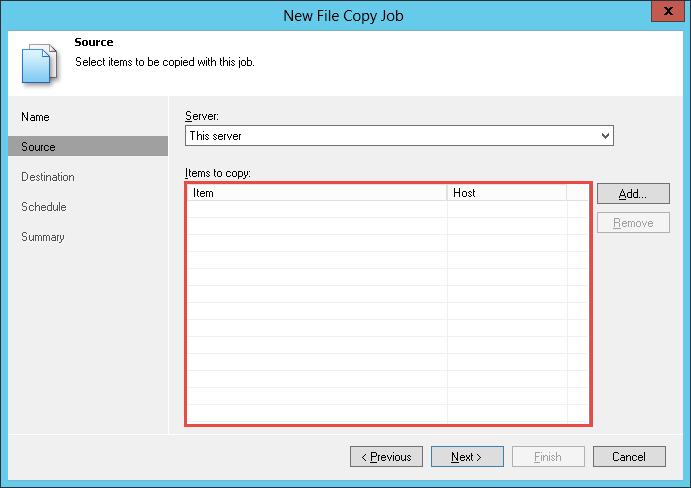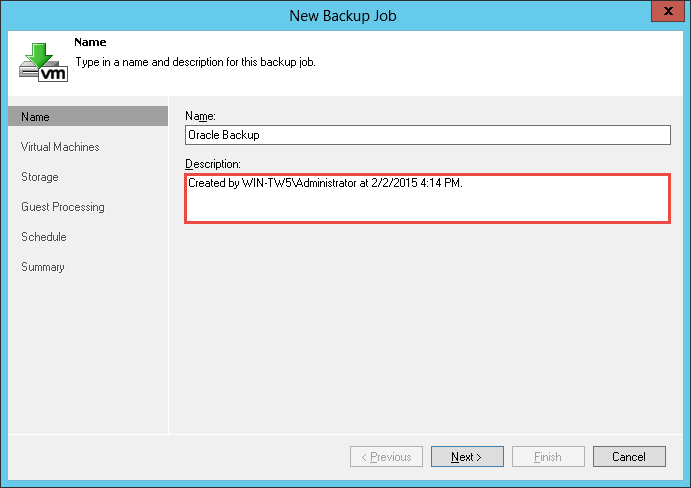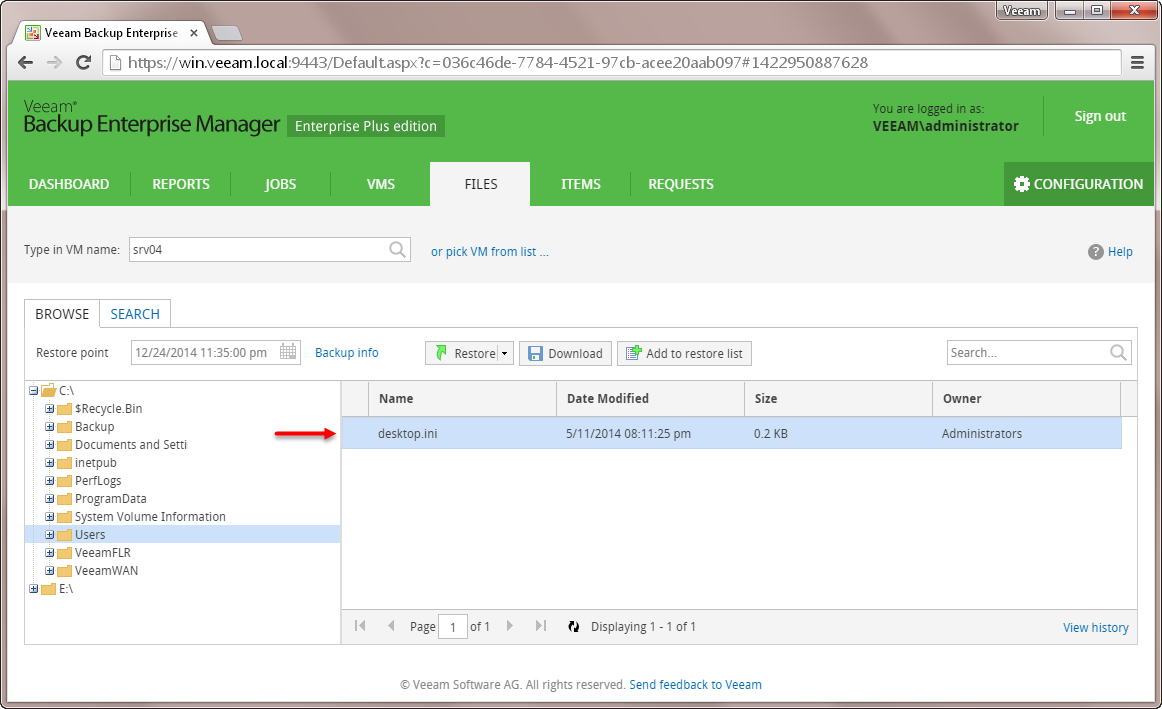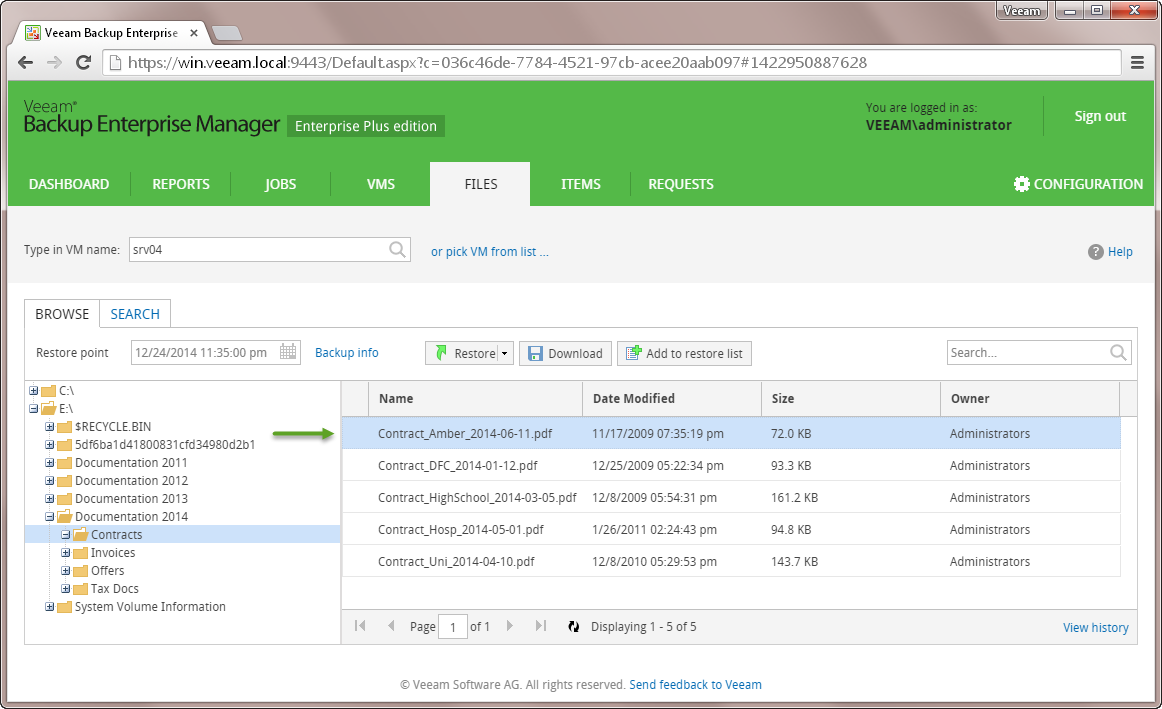Reviewing Data in Screenshots
After you take a screenshot, carefully review the data it contains:
The screenshot must be informative — it must not contain empty fields, examples of reports with no data, dashboards with gaps in performance charts and so on.
Dates shown in the screenshot must coincide with the current release version. The screenshot must not show dates in the past (that is, before the release of the solution version) or dates in the future.
If a solution wizard includes a step that has a default description with the current date, it is recommended that you change the description to drop the date before taking a screenshot of the step. In this case, you will not have to update the screenshot every time a newer version is released, unless the design team reworks the wizard. Consider the following example:
- Bad — you will have to update the screenshot for the next version.
- Good — no need to update the screenshot.
The screenshot must not contain any of the following text:
- Names of Veeam employees, sensitive security information and other private details.
Do not use your own e-mail address or e-mail addresses that belong to someone in Veeam. If you want to show a fake e-mail address, use either one of the reserved domain names listed in the Reserved Top Level DNS Names document or a domain name that is not reserved yet. Note that you must add a disclaimer at the beginning of the document in the latter case.
- Names of Veeam competitors.
- IP addresses of machines that belong to production domains.
Replace these addresses with either IP addresses used in the Veeam TW lab (that is, a private network) or reserved IP addresses (that is, private and public networks) listed in the IPv4 Address Blocks Reserved for Documentation document.
- Weird object names.
Do not use such names as myVMdoNotTouchIt, BigBalls and asdfghjkl4757387*&^&^. VMs, hosts, clusters, datastores and other infrastructure objects must have names like those listed in the following table.
Tips |
|
Object Type | Name |
|---|---|
vCenter Server | vcenter01, vcenter02, prod-vc01, prod-vc02 |
SCVMM Server | vmm01, vmm02 |
Datacenter | atlanta, columbus, wellington, datacenter01, datacenter02, datacenter03 |
Datastore | esx01-store01, esx01-store02, vol1, vol2, vol3, backup-store01, backup-store02 |
Volume | volume01, volume02, volume03 |
Share | share01, share02, share03 |
Cluster | cluster01, cluster02, cluster03, analytics, research, ha-cluster, gold, silver, bronze |
ESX(i) host | esx01, esx02, esx03, prod-esx01, prod-esx02, prod-esx03 |
Hyper-V host | hv01.veeam.local, hv02.veeam.local, hv03.veeam.local prod-hv01, prod-hv02, prod-hv03 |
Virtual machine | apache, appliance, backup, backupsrv, crm, dns, dc, exchange, sharepoint, fileserver, srv, marketing, mediasrv, mssql, mysql, oracle, proxy, sales, sharepoint, sql, systemsecure, webserver, webservices, wiki, win |
Network | VM Network, vLab Network, Internal Network, ABC Network |
Job | Oracle backup to cloud, Webserver daily replica, CRM backup to tape |
Important |
The best way to take screenshots is to create and maintain your own lab where each item you want to show has a decent name. However, there may be situations where you still have to edit text in screenshots. For example, this can happen when you connect a lab provided by the QA team to a solution. In this case, you must carefully review the names of vCenter Servers, SCVMM Servers, datastores, VMs, hosts, user accounts and other objects to avoid personalization and confusion. |
If you use names that do not belong to Veeam, add the following disclaimer at the beginning of the document:
This document may include images, program listings and examples that display names of companies, contact persons, address details and the like. Information of this type is fictional and provided for demonstration purposes only. Any resemblance to real companies or people is coincidental.
The screenshot must show real-world data or at least data that is close to realistic use cases. Consider the following example:
- Bad — if you want to provide a screenshot that illustrates a restore operation, do not select system files like desktop.ini for restore. No one would ever possibly want to restore such a file.
- Good — better to create a sample document and show it in the screenshot.
All screenshots you take must be consistent both with each other and with the text they follow:
- If the text mentions an object with a particular name, make sure the screenshot that illustrates the text also contains the same object with the same name.
- If you add a series of screenshots in a how-to topic, make sure all the screenshots are taken in the same environment, show the same dates and contain the same objects.




